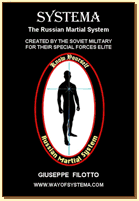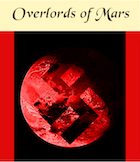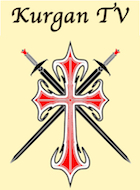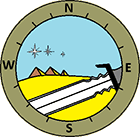Martian Bases
Their Unofficial Names and Locations
Base One – Ares Base: Situated at the Martian equator at the westernmost part of the opening that becomes Valles Marineris, this is also the original location of the German Nazi base taken over by the Allies in 1958. The name Ares Base is a renaming from the original, which was Thor, the Norse god of thunder, since originally Mars was colonised by the Nazis, primarily as a source of raw materials. Ares Base is the largest and most populated base and is composed of many separate buildings, areas and even zones, as it also houses the largest concentration of small children, aged between zero and two years old.
Base Two – Percival Lowell Base: Bases Two through Nine are located inside Valles Marineris, progressively moving further east towards the Tharsis Bulge. Crèche mothers move here after two years, together with their offspring. Contact with their mothers is progressively reduced after Base Two so as to make the children more independent and reliant on their own efforts, as well as to foster a greater sense of social responsibility through ensuring that the children’s friendships with their peers are many and varied from an early stage. As a result, Bases One through Nine, include contingents from every faction on Mars. They are the most populated bases in terms of total numbers of humans; however, a great number of the adults are involved in childrearing as well as agricultural and technical efforts and only a minimal military component is retained on the bases within Valles Marineris.
Base Three – Valles Marineris Base (aka Valles Base): Used for the development of children aged four to six. The bases within Valles Marineris are also responsible for most of the food grown on Mars. The children actively participate in the care and maintenance of the plantations using advanced mechanised systems while learning about the many different aspects of farming on Mars.
Base Four – Thars Tharkas Base: Used for the development of children aged six to eight. As children get older, different skills and aptitudes are noted and opportunities are presented to them for further specialisation along those career paths that are most satisfying to them.
Base Five – John Carter Base: Used for the development of children aged eight to ten.
Base Six – Nausicaä: Used for the development of children aged 10 to 12.
Base Seven – Dejah Thoris Base: Used for the development of children aged 12 to 14.
Base Eight – Barsoom: Located in the deepest and most lusciously vegetated part of Valles Marineris, this base is located at least in part in an almost tropical jungle setting. Dangerous animals created through genetic experimentation and with elements arising from original Martian creatures preserved in mummified and fossilised remains roam throughout Valles Marineris but are most plentiful in this area. The base is also used for the development of young adults from ages 14 to 16.
Base Nine – Completion Base: Bases One through Nine are mostly used for the rearing of children, who stay at each base for a period of two years. By their 18th birthdays, they will have completed all their training and be ready to take part in the budding Martian society, which is currently modelled mostly on a militaristic philosophy. Although different in its details, Martian society could be considered rather analogous to that of the ancient Spartans.
Base Ten – Olympos: Located on the upper reaches of Olympos and mostly inside the mountain, an outpost inside the actual crater also exists, though it does not have a separate name, being considered part of the extensive base of Olympos. The base is managed and inhabited mostly by the Soviet Contingent of the Allied forces and houses a large percentage of the total Soviet forces on Mars (composed originally mostly from Russian and Ukrainian ethnic stock but also with representatives of other currently ex-Soviet states such as Belarus, Latvia, Lithuania, Uzbekistan etc. though generally referred by others as generic “Russians”), most of which are concentrated here and at Base Elven, making this the third largest base in terms of population of adults (not counting the bases involved in childrearing).
Base Eleven – Gorod Oblakov (Cloud City): Located on the Tharsis Bulge between Pavonis Mons and Arsia Mons and toward the side leading to Valles Marineris, this is another mostly Russian base, though other contingents are also represented within it. It is roughly of a similar size to Base Twenty.
Base Twelve – Tombstone Base (Outpost): Originally located in the best nexus for the discovery of further original Martian artefacts or cities, when no progress in this endeavour was made, the outpost was relegated to doing some of the genetic engineering work required by the Greys. This base reports nominally to Admiral Du Pont’s command, as does Base Thirteen, which is involved with similar work although on a much larger scale.
Base Thirteen – Pyoctor Crater Base: As with Base Twenty-one, this base is nominally charged with the search for any surviving artefacts of original Martian cities, as these should have mostly been located on the southern hemisphere of Mars. The high level of cratering and orbital bombardment in the Martian war, however, means that practically very little evidence of the original Martians is left. This base is also responsible for the regular manning of Base Fourteen, a usually unmanned outpost used for scientific observations of the Hellas Inland Sea. Base Thirteen’s remote location allows for a large degree of autonomy. It is part of the Franco-European contingent and falls under Admiral Du Pont’s direct command.
Base Fourteen – Hellas Observation Point (Outpost): On the eastern rim of the Hellas Crater, and thus on the edge of the Hellas Inland Sea, this outpost is often unmanned as it is used only to make some scientific observations and to gather data regarding the weather patterns and other properties of the Hellas Inland Sea.
Base Fifteen – Martian South Pole (Outpost): Based at the southern polar ice cap, this base is not really at the geographic south pole of Mars. The harsh conditions and unusual surface features make this one of the most remote and secretive bases. Though it is formally labelled as an outpost, it is quite extensive and consumes disproportionate amount of resources for its supposed size. Its management is complex and secretive as the personnel is not rotated with that of the other bases at all. This base falls directly under the leadership of Lord Stanger.
Base Sixteen – Argyre Base: Actually situated almost 1,000 kilometres North of the centre of Argyre Crater. Much of the information on Martian geology is collected here as the Argyre Crater, like the Hellas Crater, incorporates a body of water, though smaller than Hellas and slightly colder. Many of the observations made here are similar to those of the Hellas Inland Sea. Genetic seeding of the large bodies of water first commenced here, with longer term projects relegated to the larger Hellas Inland Sea. A relatively large base, it falls mainly under the administration of the Anglo-American/Canadian faction.
Base Seventeen – Elysium Base: Relatively isolated, this is the headquarters of the Southern Hemisphere contingent of the allied forces, with representatives that were originally nominally from Brazil, South Africa, Argentina and Australia.
Base Eighteen – (None/Various): One of the most remote bases on the planet, located in the extremely cold and mostly featureless Northern Plains. It has no unofficial name that is used commonly, though various disparaging terms are occasionally associated with it. Examples include: The Back of Beyond, Witch’s Tit Base and Mister Nowhere. It is administered mainly by the Southern Hemisphere Allied forces.
Base Nineteen – Oriac (The Martian City): This is the largest base complex (of those not involved in childrearing) after Base One, and is in fact a grouping of various domes and other buildings spread out over a large area much like Base One. The research going on here regarding the Martian buildings, artefacts and enormous sculptures involves every contingent of the Allied forces, and there is generally good cooperation between the various factions. It is also the largest agglomeration of the Franco-European contingents.
Base Twenty – Utopia Base (Edgar Rice Burroughs Base): The second Anglo-American/Canadian main base of operations.
Base Twenty-one – Copernicus Base: Located in Copernicus Crater, this is also a relatively highly populated base, coming fourth in terms of population size after Ares Base, Oriac and Olympos. Nominally, it is the main Anglo-American/Canadian Base and is tasked primarily with the search and retrieval of Martian artefacts.






